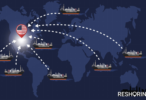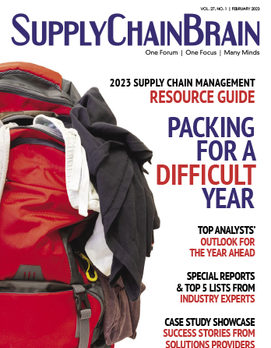
Think Tank
Shippers Explore Transport Alternatives to Manage Congested Freight Networks

Photo: iStock.com/Bet_Noire
The state of freight is a major topic of conversation inside corporate boardrooms, as the backups at ports, rail yards and inland distribution hubs over the past two years snarled U.S. supply chains.
While there are signs that freight congestion is starting to ease, transportation capacity is stretched beyond limits, and no political action can correct the imbalance. Companies have to accept the situation and find ways to minimize its impact.
As a result, shippers are taking a fresh look at modes they may have rejected in the past. For example, expedited shipping services that were once relegated for emergencies are now an everyday part of the transportation mix.
The congestion at ports and a shortage of containers, for example, is driving demand for air freight, as companies switch from sea to air to meet market demand across geographies. Air freight is typically 12 to 16 times more expensive than sea transport, but the gap has shrunk as ocean carriers increased their rates in response to heightened consumer demand resulting from the pandemic. The growth in air cargo has even spurred ocean carriers to purchase aircraft to help customers ship freight around the world, demonstrating that flying cargo may not just be a short-term trend. The fact that ocean rates are now falling only underscores the unpredictability of the freight market and the imperative for shippers to develop an agile, multimodal approach.
The shift to air cargo represents a philosophical transition. In a world of free, two-day shipping, everything is time sensitive. That means expedited services have to be built into inventory management models. Customers are more likely to engage a shipper who is prompt and responsive and who delivers in a timely manner. For customers, value comes from experience, consumption and use.
In building more effective and optimized shipping and delivery systems, you can also tap into over-the-road expedited services. These have traditionally been handled as dedicated truckload shipments. But that is inefficient, because expedited loads often don’t fill an entire trailer and could fit in smaller vehicles, such as sprinter vans, cargo vans, box trucks and straight trucks. However, the traditional small vehicle expedited market poses its own challenges. Until recently, it has been highly fragmented, meaning that it was difficult for shippers to locate and book the vehicles they needed, when they needed them. Historically, the small vehicle expedited market has catered to highly time-sensitive industries, such as automotive manufacturing, and the rates associated with this mode reflected the premium nature of the service being provided.
Due to its higher costs, traditional expedited freight has been primarily utilized for shipments over shorter distances. Today’s small-vehicle expedited networks leverage technology to defragment the market, create competition and thereby reduce costs, empowering shippers to utilize this mode for local, regional or even cross-country shipping needs like never before. Small-vehicle expedited shipping also minimizes risk of frequent loading and unloading, damage, theft and mishandling when using other modes of transportation, such as traditional LTL.
Today’s supply chain management is all about risk mitigation. More than two years of pandemic-induced disruption has forced companies to revamp their supply chains to make them more resilient. A McKinsey survey of supply chain executives found that nearly all (92%) had improved resilience through physical changes to their supply-chain footprints. These changes include increasing inventory of critical products, dual sourcing of raw materials, and increasing inventory along the supply chain.
Increasing inventory levels has led to increases in the cost of warehouse space. To offset the higher storage costs, or when warehouse capacity in suitable locations is simply unavailable, some shippers have resorted to storing cargo in containers. The practice has worsened the shortage of transportation equipment that has plagued supply chains throughout the pandemic.
Many retailers that have built up inventories in response to pandemic-driven consumer demand increases are now discovering that they may not only have too much inventory on hand, but that their inventory may not be positioned where it is needed. Repositioning this inventory poses yet another challenge that small-vehicle logistics can affordably and efficiently address.
The situation further illustrates the fragility of logistics networks and the need to increase capacity. To be sure, customers also should recognize that building resilience might impact efficiency and ultimately increase costs.
In this dynamic environment, shippers have to adjust their beliefs and expectations to reflect current supply chain realities. The transportation capacity crunch isn’t going away anytime soon, and they have to plan accordingly.
Everyone is in the same predicament with backlogs, late shipments, and higher costs. Still, customers have a strong desire for reliability and are willing to pay more for a better customer experience. On-time delivery is one of the key ways customers judge their experience. Today’s small-vehicle expedited shipping offers shippers faster delivery and increased agility, which can be a competitive advantage in today’s challenging marketplace.
Alex Winston is president of Expedite All.




